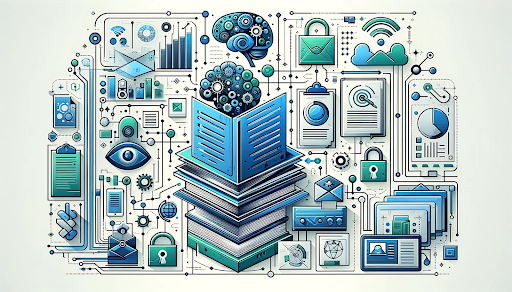In the last quarter-century, the business landscape has witnessed a technological evolution akin to a revolution, especially in the domain of document processing. For Small and Medium Enterprises (SMEs), understanding this evolution is not just about keeping up with the times; it’s about leveraging new tools for unparalleled efficiency and growth. This article aims to demystify the technical aspects of document processing automation, explaining it in a way that’s accessible to non-technical SME owners and decision-makers.
The Evolution of OCR: From Scanning to Understanding
The journey of document processing technology can be traced back to the advent of Optical Character Recognition (OCR) technology. In the last 25 years, OCR has evolved from merely digitizing printed text to understanding and processing it. It’s like the difference between simply hearing words and truly understanding their meaning. A popular quote by Stephen Hawking, “Intelligence is the ability to adapt to change,” aptly describes this evolution.
The Leap Forward: Beyond OCR
Recent advancements have taken us beyond traditional OCR. Technologies like Computer Vision, Natural Language Processing (NLP), and Machine Learning are now at the forefront. Together, they enable systems not just to read text, but to comprehend and contextualize it.
- Computer Vision: Allows systems to ‘see’ and interpret visual information from documents.
- NLP: Empowers systems to understand and interpret human language within the context.
- Machine Learning & Large Language Models (LLM): These technologies enable systems to learn from data, improve over time, and make intelligent decisions.
Real-World Applications: Making Sense of the Jargon
Let’s consider a well-known example: the evolution of email spam filters. Initially, they used basic keyword matching (akin to early OCR technology). Today, they employ sophisticated NLP and machine learning to understand context and intent, significantly improving their effectiveness.
The Power of Low-Code Automation in Invoice Processing
For SMEs, the integration of these technologies in invoice processing can be transformative. Low-code automation platforms like XT make these advanced technologies accessible without the need for extensive technical knowledge or significant investment. This means SME owners can implement and manage these systems with minimal programming experience.
Research Insights: The Future is Automated
According to Gartner’s 2023 predictions IT’s role becoming more prominent within an organization as digital business initiatives accelerate and mature. This isn’t a distant future; it’s an imminent reality. Forrester’s research further emphasizes that companies embracing automation will see a significant increase in efficiency and a reduction in operational costs.
The current trajectory of technological advancement and automation is not just about enhancing IT operations; it’s about redefining them. Key research insights reveal a multi-dimensional shift in how businesses, particularly SMEs, are adapting to this change:
- Optimizing Resilience, Trust, and Operations: The focus of IT operations is evolving. Businesses are now prioritizing resilience and trust alongside efficiency. This means not just having robust systems but also ensuring they are secure and reliable. This shift is crucial for SMEs as they navigate an increasingly digital landscape where trust is paramount.
- Accelerating Automation and Value Chains: The pace of automation is not just steady; it’s accelerating. More organizations are moving towards fully automated value chains. This automation wave is transforming everything from production to customer service, creating seamless, efficient, and interconnected processes. For SMEs, this translates to a significant opportunity to streamline operations and compete on a larger scale.
- Beyond IT: Scaling Productivity and Customer Value: The role of CIOs and technology leaders is expanding. The focus is now on scaling productivity, enhancing customer engagement, and maximizing customer value, moving beyond the traditional boundaries of IT operations. For SMEs, this means leveraging technology not just for operational tasks but as a strategic tool for growth and customer relationship enhancement.
- The Rise of Sustainable and User-Friendly Solutions: In the current business milieu, the demand for sustainable, easy-to-use technology solutions is escalating. SMEs are seeking solutions that are not only powerful and efficient but also sustainable and easy to adopt. This demand is driving innovation in the tech sector, leading to the development of solutions that are both advanced and user-friendly.
XT: Tailor-made for SMEs
XT stands out as a perfect fit for SMEs looking to harness the power of document processing automation. It combines the advanced capabilities of AI and machine learning with a user-friendly, low-code platform, making it an ideal solution for SMEs.
Embracing the Future: The Smart Move for SMEs
In a world rapidly moving towards AI and automation, clinging to last-century technologies or manual processes is no longer viable. SMEs must think smart, adapt, and embrace the right automation tools to stay competitive. As Bill Gates once said, “The first rule of any technology used in a business is that automation applied to an efficient operation will magnify the efficiency.” XT offers SMEs the opportunity to do just that – magnify their efficiency and thrive in the challenges of tomorrow’s business environment.
Invest in the future, invest in XT. The time to act is now.




